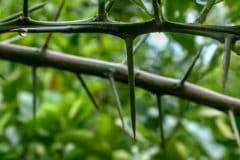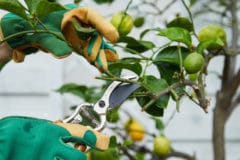Grafted vs. Seed-Started Lemon Trees
Commercial growers eager to get the earliest possible harvest grow grafted lemon trees. Home growers who want the fun of getting their lemon tree for free have the option of growing seeds from grocery-store lemons.
That said, the money saved on starting a lemon tree from seed can be eaten up by the 10 or more years of care it needs before producing a single flower or fruit. Plant a grafted lemon tree sapling and that 10-year wait shrinks to just two or three. After one or two modest crops, your tree will be on its way to producing up to 1,500 lemons every year!
Expert gardener’s tip: If you decide to go the seed-starting route, make sure not use a Meyer lemon. The seeds it produces can’t be counted on to produce a tree identical to the one it came from.
What Is a Grafted Lemon Tree?
Grafting is the practice of taking a section of a lemon tree with the traits a grower wants and grafting it onto a rootstock with other desirable traits the first tree lacks. These may include:
- Improved cold hardiness
- Improved disease resistance
- A dwarf habit
The grafted section, or scion, is joined to the rootstock at the lower trunk. The graft union always produces a scar.
Where to Find a Grafted Lemon Tree
Grafted lemons are available at brick-and-mortar nurseries and from online vendors. Most are sold as 1- to 2-foot or 2- to 3-foot trees. Buying an older one won’t guarantee you an earlier harvest, because it might be rootbound and need more time to establish than a smaller, younger one.
Instead, look for a 1- to 2-year tree with a grafting scar 6 or more inches above the soil line and large, deep-green leaves sprouting all along its trunk.
Time from Flowering to Harvest
The time it takes after flowering for your lemons to be ready to pick depends on several factors, including:
- The cultivar you’re growing
- The size of the crop
- The air temperature
- Your care regimen
As a general rule of thumb, however, most lemons need from four months to a year to reach the picking stage.












